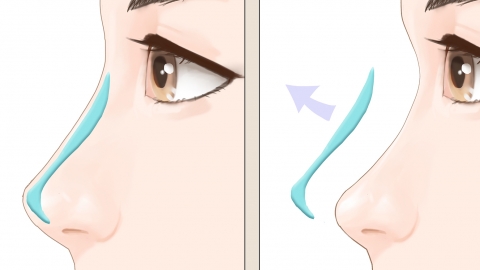What should I do if my nose becomes crooked after rhinoplasty with implants?
Generally, prosthetic rhinoplasty can reshape the nasal structure and improve the appearance of the nose through surgical methods. The general reference price for prosthetic rhinoplasty ranges from 5,000 to 10,000 yuan per session, with visible improvement typically seen within 4-6 months after surgery. However, symptoms such as swelling and pain may occur. A crooked nose following prosthetic rhinoplasty may be related to intraoperative mishandling, inappropriate selection of implant material, nasal tissue laxity, nasal infection, or implant rejection. It is recommended to seek timely medical attention and undergo general treatment or medication under a doctor's guidance. A detailed analysis is as follows:

1. Intraoperative Mishandling
During surgery, the surgeon may fail to accurately assess the nasal anatomical structure, leading to improper placement or insecure fixation of the implant, which can result in a crooked nose. Nasal revision surgery can be performed under a doctor's guidance, involving removal and reshaping of the implant, repositioning it correctly, and employing more secure fixation methods to ensure implant stability. The general reference price for nasal revision surgery ranges from 5,000 to 60,000 yuan per session, with visible improvement typically occurring within 1-3 months after surgery. However, symptoms such as swelling and bruising may occur.
2. Inappropriate Selection of Implant Material
The texture, shape, or size of the selected implant material may not match the patient's nasal structure, leading to a crooked nose after implantation. Under a doctor's recommendation, revision rhinoplasty can be performed by reopening the nasal skin, removing the original implant, replacing it with one that matches the patient's nasal structure, and repositioning it correctly. The general reference price for revision rhinoplasty ranges from 8,000 to 40,000 yuan per session, with visible improvement typically occurring within 1-3 months after surgery. Symptoms such as mild pain and swelling may occur.
3. Nasal Tissue Laxity
The patient's nasal tissue may be naturally loose, failing to provide sufficient support for the implant, resulting in a crooked nose. Following medical advice, hyaluronic acid injections can be administered to treat this condition by injecting hyaluronic acid into the nasal tissue to increase tissue volume and support, thereby improving nasal appearance. The general reference price for hyaluronic acid injections ranges from 3,000 to 6,000 yuan per injection, with visible improvement typically seen within 1-2 weeks after the procedure. Mild pain may occur.
4. Nasal Infection
Poor hygiene after surgery can allow bacterial invasion of the wound, causing infection. This infection can lead to nasal tissue inflammation and edema, affecting implant stability and resulting in a crooked nose. Symptoms usually include redness, swelling, pain, and fever. Treatment typically involves medication such as amoxicillin capsules, cefixime dispersible tablets, or erythromycin ointment, as prescribed by a physician.
5. Implant Rejection Reaction
The patient's immune system may react against the implanted material, causing inflammation and edema in the nasal tissue. In severe cases, this may lead to implant displacement or a crooked nose. Symptoms generally include redness, swelling, pain, and itching. Treatment usually involves medications such as dexamethasone sodium phosphate injection, hydrocortisone injection, or loratadine capsules, as directed by a physician.
During the postoperative recovery period, it is recommended to strictly follow medical instructions, enhance postoperative care, and keep the wound clean and dry to ensure surgical effectiveness.










